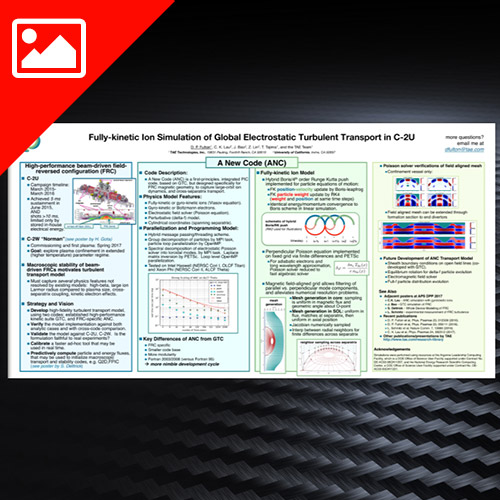
Oct 2017 | Research Library, Posters, Fusion Energy, Fusion Research, Fusion Science, Fusion Technology, Plasma Research, Simulation, Transport, Turbulence
October 2017 | D.P. Fulton| APS-DPP | Poster
High-performance beam-driven field- reversed configuration (FRC). Achieved 5ms sustainment in June 2015, AND shots >10 ms, limited by stored energy.
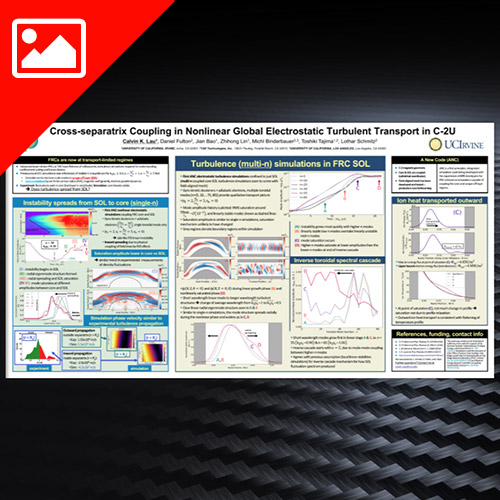
Oct 2017 | Research Library, Posters, Fusion Energy, Fusion Research, Fusion Science, Fusion Technology, Plasma Research, Simulation, Transport, Turbulence
October 2017 | Calvin K. Lau | APS-DPP | Poster
Advanced beam-driven FRCs at TAE have lifetimes of milliseconds; turbulence simulations required for understanding confinement scaling and future devices
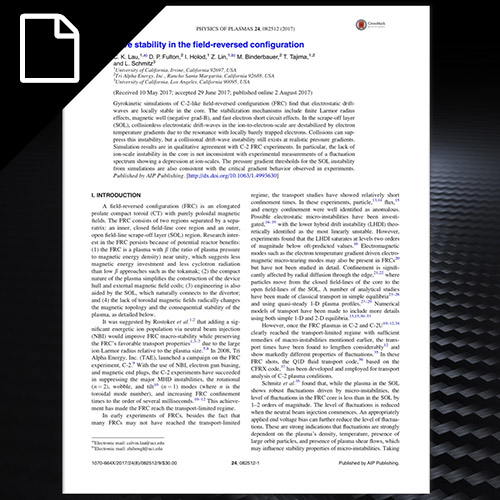
Aug 2017 | Research Library, Papers, Equilibrium, Fusion Energy, Fusion Research, Fusion Science, Fusion Technology, Simulation, Stability, Theory, Turbulence, Waves
August 2017 | C. K. Lau | Physics of Plasmas | Paper
Gyrokinetic simulations of C-2-like field-reversed configuration (FRC) find that electrostatic drift- waves are locally stable in the core. The stabilization mechanisms include finite Larmor radius effects, magnetic well (negative grad-B), and fast electron short circuit effects.
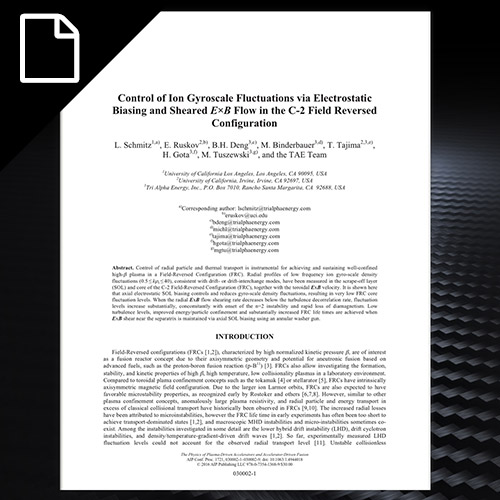
Dec 2016 | Research Library, Papers, Diagnostics, Edge Control, Experiment, Fusion Energy, Fusion Research, Fusion Science, Fusion Technology, Stability, Transport, Turbulence
December 2016 | L. Schmitz | Nature Communications | Paper
An economic magnetic fusion reactor favours a high ratio of plasma kinetic pressure to magnetic pressure in a well-confined, hot plasma with low thermal losses across the confining magnetic field.
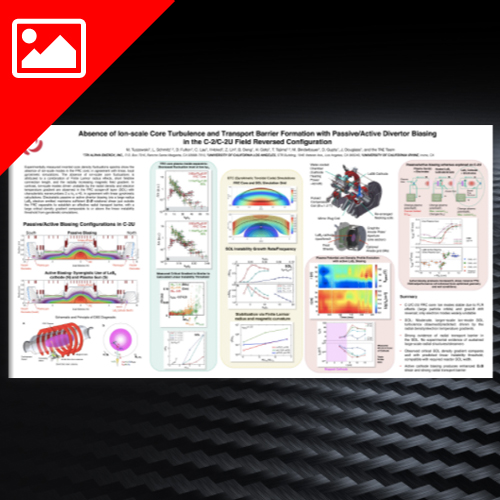
Oct 2016 | Research Library, Posters, Fusion Energy, Fusion Research, Fusion Science, Fusion Technology, Overview, Plasma Research, Turbulence
October 2016 | Michel Tuszewski | APS-DPP | Poster
Experimentally measured inverted core density fluctuations spectra show the absence of ion-scale modes in the FRC core, in agreement with linear, local gyrokinetic simulations.
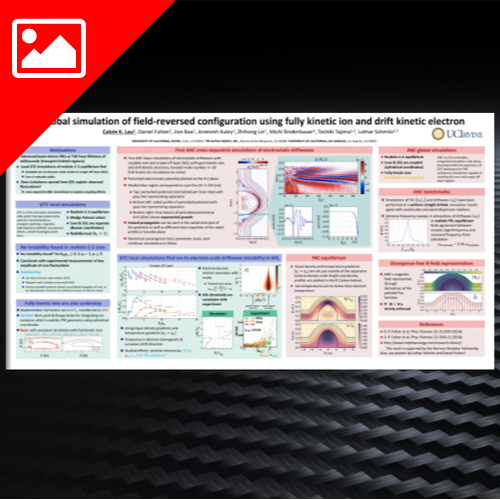
Oct 2016 | Research Library, Posters, Fusion Energy, Fusion Research, Fusion Science, Fusion Technology, Plasma Research, Simulation, Turbulence
October 2016 | Calvin K Lau | APS-DPP | Poster
Advanced beam-driven FRCs at TAE have lifetimes of milliseconds (transport-limited regimes). Local GTC simulations of realistic C-2 equilibrium find…





